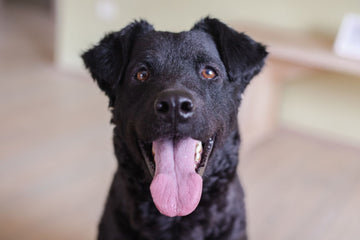Have you ever locked eyes with a dog and wondered, What are they thinking? That intense, soulful gaze isn’t just random—it’s a form of communication. Dogs use eye contact to let you know how they feel, and a lot of the time, it’s to say that they love you. But there’s more to it than just affection. From bonding to begging, decoding your dog’s stare can deepen your connection and even boost your mood.
The Science Behind the Stare: Oxytocin and the "Love Hormone"
When your dog looks into your eyes, something remarkable happens in both of your brains. Researchers have found that mutual gazing between dogs and humans triggers the release of oxytocin—the same "feel-good hormone" that strengthens bonds between mothers and babies. A study published in Science revealed that dogs who stared at their owners for longer periods had higher oxytocin levels, and so did their humans. Essentially, your dog’s loving gaze isn’t just heartwarming—it’s biologically rewarding.
But why do dogs engage in this behavior more than other animals? Thousands of years of domestication have fine-tuned their ability to communicate with us, and eye contact is one of their most powerful tools. Unlike wolves, which avoid prolonged eye contact (a sign of aggression in the wild), dogs have evolved to seek out our gaze as a way to connect.
What Your Dog’s Stare Really Means
While love is a big part of it, dogs also stare for other reasons. Here’s how to decode their gaze:
-
"I Trust You Completely" – A soft, relaxed gaze with slightly squinty eyes often signals contentment and trust. If your dog looks at you this way while resting, they’re showing pure affection.
-
"I Need Something… Probably Food" – Ever notice your dog watching you intently while you eat? This is the classic "begging stare." Dogs quickly learn that humans respond to eye contact, and they use it strategically—especially when snacks are involved.
-
"What’s Next?" – Dogs are highly attuned to routines. If they stare at you after finishing their meal or bringing you a toy, they’re likely waiting for a cue. This is common in trained dogs anticipating a command or walk.
-
"I’m on High Alert" – A hard, unblinking stare with a stiff body could signal tension or aggression, especially toward strangers or other animals. Context matters—watch for other body language cues like raised hackles or a tucked tail.

Should You Stare Back?
While prolonged eye contact can strengthen your bond, direct staring can also be perceived as a challenge in the animal kingdom. If a dog seems uneasy (looking away, yawning, or licking their lips), break eye contact to avoid stress. But with your own pup? A gentle gaze paired with slow blinks—a canine "I love you"—can reinforce your connection.
The Unspoken Bond: How Dogs See Us
Dogs don’t just stare—they study us. Research from Eötvös Loránd University found that dogs can read human emotions by observing our facial expressions and eye movements. They’re one of the few species that look to humans for guidance (a trait known as "referential gazing"). When your dog stares, they might be trying to understand your mood or simply seeking reassurance.
Final Thoughts: Embrace the Gaze
Next time your dog locks eyes with you, take a moment to appreciate the silent conversation. Whether they’re saying "I adore you," "Where’s my treat?" or "Let’s play!"—their stare is a window into their emotions. And thanks to oxytocin, that shared glance isn’t just emotional; it’s chemistry. So go ahead, gaze back. Your dog definitely is.
Fun Fact: Dogs are more likely to steal food when humans aren’t looking—proof they understand the power of eye contact!

By understanding why dogs stare, we not only decode their behavior but also nurture a deeper, more intuitive relationship with our four-legged friends. After all, in a world full of noise, sometimes the strongest connections are wordless.





